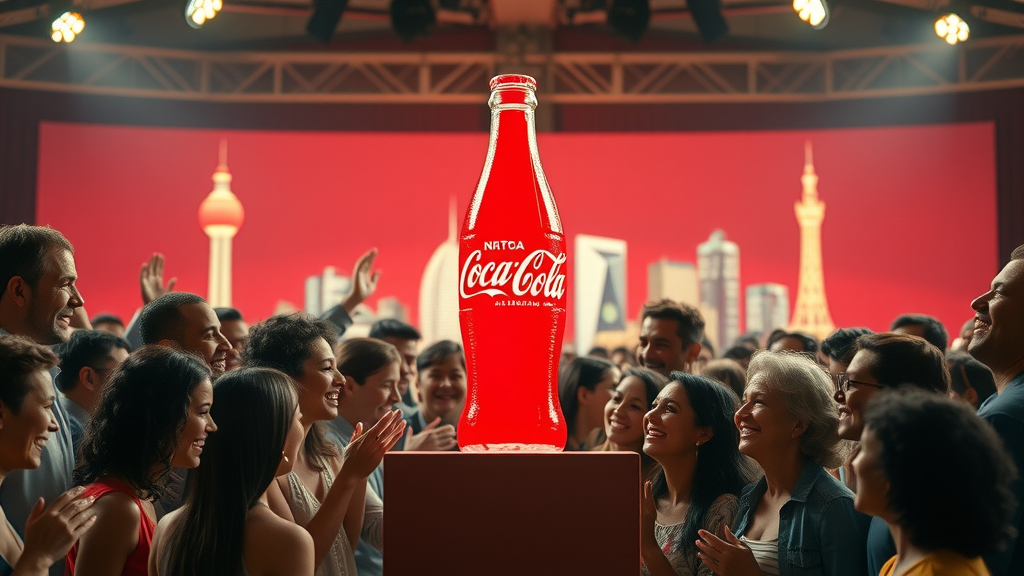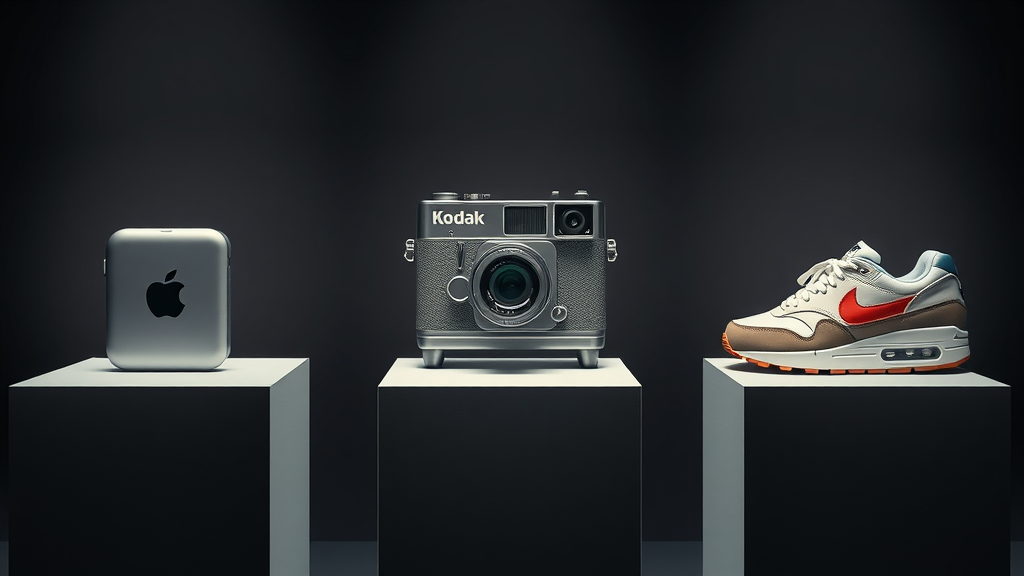Did you know? Brands with strong brand equity outperform the market by more than 120% over ten years. Imagine supercharging your business growth with a single invisible force—brand equity. Whether you’re launching a new product, looking to gain a competitive edge, or hoping to transform customer loyalty into bottom-line results, understanding the magic of brand equity is the game-changer you can’t afford to ignore. This comprehensive guide unpacks why brand equity matters more than ever, what drives it, and how to build a brand presence that sticks—now and for years to come.
Startling Statistics: Why Brand Equity Matters More Than Ever
As the competition for consumer attention grows more fierce, brand equity stands out as the crucial differentiator between brands that thrive and those that fade into obscurity. Research consistently reveals that companies with robust brand equity experience faster revenue growth, command higher prices, and enjoy greater customer loyalty—even in saturated markets. In fact, a study found that brands with a loyal customer base and strong positive associations can weather economic downturns far better than lesser-known competitors. The value of a recognizable, trusted brand only increases as markets become more global and digital.
Consider this: up to 60% of consumers say they are willing to pay more for products or services from brands they trust, and brands with positive brand equity typically see customer retention rates up to 89%. This isn’t just conjecture; it’s a proven business asset. Whether you're a start-up aiming to build brand recognition or an established leader managing brand reputation, investing in brand equity is essential for both immediate impact and long-term value.

“Brands with strong brand equity outperform the market by more than 120% over ten years.”
What You’ll Learn in This Brand Equity Guide
- Understand brand equity and its impact on business growth
- Discover the key components of building brand equity
- Learn to measure brand equity and interpret the results
- Explore real-world examples including Coca-Cola’s brand equity
- Gain actionable steps for managing brand equity for long-term success
Defining Brand Equity: Core Concepts for 2024
What Do You Mean by Brand Equity?
Brand equity refers to the tangible and intangible value that your brand adds to a product or service. At its core, brand equity is about how consumers “feel about” and “perceive” your brand compared to others. That magic moment when people choose your brand over competitors—even at a higher price—signals the power of brand equity in action. This value comes from customer experiences, brand recognition, positive associations, and the trust you’ve built over time. In 2024, a brand with strong equity is not only seen as desirable but as essential—the one that customers advocate for, recommend to friends, and return to again and again.
Effective brand equity acts as a protective moat. It enables businesses to introduce new products more easily, withstand market volatility, and generate loyalty that can’t be bought with discount pricing alone. When measuring brand strength today, companies must look at both the quantitative impact (such as sales and market share) and qualitative aspects (such as brand image and customer sentiment). In short, brand equity is your brand’s most valuable and resilient asset in the marketplace.

What Best Describes Brand Equity?
The best way to describe brand equity is: the total value of a brand as a result of customer perception, loyalty, and market influence. Brand equity is not just about having a recognizable name or logo—it encompasses everything people think, feel, and expect about your offerings. This includes their emotional connection, previous experiences, and even how they believe your brand aligns with their own values. Positive brand equity empowers companies to set higher prices, attract new customers, and develop lasting relationships with loyal customers.
In the digital age, brand equity is amplified by social media presence, influencer partnerships, and real-time customer feedback. When consumers consistently choose you based on brand reputation rather than price, your brand equity is high. Poor handling of public issues, inconsistent messaging, or negative incidents can quickly erode this value—underscoring the importance of active, proactive brand management. In all, brand equity is best described as a combination of trust, expectation, and recognition built over time.
Brand Equity Components: The Essential Pillars

Brand Awareness and Brand Associations
Brand awareness is the foundation of brand equity—it’s about how familiar people are with your brand and how quickly they recognize it among competitors. Without strong brand awareness, consumers might overlook even the best products or services. Brand associations are closely linked—they’re the set of qualities, ideas, and experiences consumers connect with your brand, from “luxurious” to “affordable” or “innovative.” Building positive brand associations starts with consistent messaging and visual identity, then deepens through customer experiences, social media storytelling, and endorsements from trusted sources.
The power of these two components is in their interplay: the more customers know you, the stronger your brand associations become. Neuromarketing studies show that positive associations lead to faster recall, higher preference, and ultimately, increased sales conversions and repeat business. This highlights why businesses must invest in both broad awareness campaigns and personalized storytelling to optimize their brand equity across audiences.
Brand Loyalty and Customer Experience
Brand loyalty goes beyond simple repeat purchases—it’s about creating loyal customers who actively promote your brand and ignore alternatives, often regardless of price fluctuations. The key driver behind this loyalty is a consistently positive customer experience. Customers who feel valued, heard, and appreciated tend to stick around and share their experiences with others, amplifying your brand reach through word-of-mouth and social media.
The most successful businesses treat every touchpoint—whether in-store, online, or through customer support—as an opportunity to reinforce their brand promise and exceed expectations. Exceptional customer experience transforms everyday buyers into loyal brand advocates, reducing churn and maximizing customer lifetime value. By investing in brand loyalty programs and making the customer journey seamless, you’re actively building the heart of your brand equity.

Perceived Quality and Higher Price Advantages
Perceived quality is the customer’s subjective judgment of “how good” your product or service is relative to alternatives. When your brand is associated with high quality, you gain the ability to set higher prices—and customers will gladly pay them, knowing what they’re getting meets or exceeds expectations. This premium positioning is only possible with strong brand equity, as consumers are more comfortable investing in brands they trust.
Higher perceived quality leads to better market performance: increased sales, reduced price sensitivity, and greater resilience to competitors entering the market. Brands like Apple and Nike routinely demonstrate that consumers will pay more for products that carry the reputation of superior quality—even if similar alternatives exist at a lower price point. That enduring trust is the direct result of sustained brand equity built around perceived quality.
| Components of Brand Equity | Description | Impact on Business |
|---|---|---|
| Brand Awareness | How well your brand is recognized by target audiences | Boosts recall, increases reach, and drives initial purchase consideration |
| Brand Associations | Qualities and beliefs linked to your brand | Shapes how consumers perceive and engage with your business |
| Brand Loyalty | Customers’ commitment to buying your products/services repeatedly | Lowers acquisition costs, increases repeat sales, and amplifies referrals |
| Perceived Quality | Customer’s view of product/service excellence | Enables premium pricing and strong market positioning |
| Customer Experience | Quality of each interaction from purchase to support | Drives loyalty, satisfaction, and brand advocacy |
The 4 Types of Brand Equity
Positive Brand Equity versus Negative Brand Equity
The concept of brand equity goes beyond being just an asset; it can be positive or negative. Positive brand equity means customers perceive your brand as valuable, reputable, and trustworthy—and are more likely to buy, recommend, and pay a premium for your products or services. Classic examples include Apple and Nike, whose positive equity lets them lead the market even as competition intensifies. On the flip side, negative brand equity means negative associations, poor experiences, or damaged reputation. Customers actively avoid brands with negative equity, which can drag down sales, require heavy discounting, or even put companies out of business.
Brand equity is dynamic—and can shift rapidly due to scandals, social media crises, or product failures. Conversely, a single successful marketing campaign or a landmark customer experience can boost positive brand equity for years. It’s a reminder that proactive reputation management and consistent value delivery are non-negotiable in safeguarding brand equity.

Brand Image and Brand Association
Brand image refers to how your brand is actually perceived in the market—the collective impression formed by your logo, messaging, advertising, customer service, and public relations. Brand associations are the specific ideas, feelings, and symbols people connect with your brand, consciously or unconsciously. Both play a huge role in your brand’s equity: positive images and associations drive preference, while negative ones create barriers to growth.
Crafting a powerful brand image often involves storytelling, visual consistency, and emotional connection. For instance, Dove’s “Real Beauty” campaign built a positive image and association around authenticity and inclusiveness. Brand associations, meanwhile, are influenced by endorsements, customer testimonials, and cultural trends. Companies must monitor and manage both to ensure their brand equity trend remains positive.
How to Build Brand Equity: Actionable Strategies
Build Brand Awareness with Consistency
To build brand equity from the ground up, start with brand awareness. Targeted marketing campaigns, including digital advertising, influencer partnerships, and experiential events, can introduce your brand to new audiences and reinforce recognition among existing customers. Beyond one-off promotions, the key is consistency—ensure that your brand’s visual and verbal identity is the same across every customer touchpoint.
Cross-platform consistency, from your website and emails to your social media channels and physical locations, is crucial in strengthening recognition and recall. Combine this with strategic partnerships to amplify reach—co-branded campaigns with organizations your audience trusts can boost associations and drive lasting awareness. Every piece of content and every visual element helps you build a stronger bond with potential and loyal customers.

- Implement targeted marketing campaigns
- Maintain visual and verbal consistency across platforms
- Activate partnerships to broaden reach
Craft Positive Customer Experiences to Build Brand Equity
Every customer interaction matters. Delivering on your brand promises at every touchpoint ensures customers feel valued, increasing their satisfaction, loyalty, and likelihood to advocate for your brand. Soliciting and acting on customer feedback strengthens your brand equity, showing that you care and are committed to improvement. Even small gestures—personalized emails, quick resolutions to complaints, or surprise rewards—can be the difference between an average brand and one with cult-like loyalty.
Exceptional customer service strategies not only delight current buyers but also attract new customers who read positive stories online. Make customer experience a cornerstone of your operating model to enhance your brand’s emotional connection and competitive advantage. In a market where buyers have endless options, the brands that exceed expectations stand out and build enduring brand equity.
- Deliver on brand promises at every touchpoint
- Solicit and act on customer feedback
- Employ exceptional customer service strategies
Foster Brand Loyalty and Customer Loyalty
Brand loyalty and customer loyalty are built over time by consistently exceeding expectations and fostering relationships. Launching loyalty programs, offering personalized rewards, and designing exclusive offers for repeat customers can turn occasional buyers into lifelong fans. Personalization—using customer data to show you recognize and appreciate their preferences—reinforces these bonds.
Encourage loyal customers to share their stories through testimonials, reviews, or referral programs. The social proof generated by other fans deepens trust and helps you acquire new customers organically. Ultimately, brand equity grows strongest when you nurture a community of loyal customers who believe in your brand, share your values, and willingly act as ambassadors.
- Launch loyalty programs
- Personalize outreach and rewards
- Encourage repeat business through exclusive offers
Watch: Explainer video on the exact steps to build brand equity.
Measuring Brand Equity: Tools and Techniques
Quantitative Methods to Measure Brand Equity
Knowing how to measure brand equity gives you the insight to refine and scale your efforts. Quantitative methods use data to reveal how your brand is performing relative to your competitors. Brand recall surveys gauge how many people can spontaneously remember your brand, while the Net Promoter Score (NPS) measures customer loyalty and the likelihood of recommendation. Market share analysis quantifies the effectiveness of your brand strategy against similar products or services in your niche.
Regularly tracking these metrics helps you pinpoint brand strengths and surface possible brand weaknesses for improvement. With technology, brands can track real-time analytics, sales trends, and even consumer sentiment at scale. Effective measurement means you’re not just guessing the value of your brand equity—you’re making informed decisions that keep your strategy competitive and future-ready.

- Brand recall surveys
- Net Promoter Score (NPS)
- Market share analysis
Qualitative Approaches: Customer Feedback & Brand Perception
Numbers tell part of the story, but the emotional and psychological drivers of brand equity are best discovered through qualitative research. Focus groups allow you to hear firsthand how consumers describe your brand and what sets it apart. Analyzing online reviews and social media sentiment reveals how the public talks about you and flags any emerging issues or trends. In-depth interviews with loyal customers can unlock actionable insights other methods might miss.
These approaches provide context to the numbers, uncovering why people feel loyal or frustrated. Blending quantitative and qualitative data is the surest path to an accurate, holistic view of your brand equity—empowering you to take actions that resonate with your target audiences and fortify your brand image.
- Conduct focus groups
- Analyze online reviews and social media sentiment
- Interview loyal customers for in-depth insights
| Tool or Technique | What It Measures | Best Use Scenario |
|---|---|---|
| Brand Recall Surveys | Brand awareness and recall | Track initial recognition and influence of campaigns |
| NPS (Net Promoter Score) | Customer loyalty and advocacy | Compare loyalty and referral potential across time |
| Focus Groups | Brand associations and perception | Discover emotional drivers and emerging concerns |
| Social Listening | Online brand sentiment and reputation | Uncover real-time reactions, track issues, and identify viral moments |
Watch: Step-by-step walkthrough for measuring brand equity effectively in your business.
Real-World Examples: Brand Equity in Action

What Is Coca-Cola’s Brand Equity?
Coca-Cola is a textbook example of brand equity at its height. Over generations, Coca-Cola has built an instantly recognizable brand image characterized by its unique logo, red-and-white palette, and emotional marketing. Their brand associations—happiness, refreshment, togetherness—have produced a level of loyalty most brands aspire to. The company’s ability to command premium prices even in markets filled with alternatives is a direct outcome of this strategy. Its brand equity is so robust that it’s often cited as being worth more than the company’s tangible assets.
Coca-Cola’s success stems from a relentless focus on consistent branding, memorable campaigns, and a willingness to evolve with consumer trends (think holiday commercials, personalized cans, and engagement on social media). The brand’s ability to foster positive experiences, adapt, and deliver on its promise of refreshment is a living case study in the transformative power of brand equity.
Iconic Brands with Positive or Negative Brand Equity

- Apple – Positive brand equity through innovation and design
- Kodak – Lost brand equity due to market irrelevance
- Nike – Positive brand equity built on inspiration and performance
Apple demonstrates how continuous innovation and design-focused strategies foster a loyal customer base and global recognition. Nike’s emotional storytelling and focus on performance have made it synonymous with inspiration and achievement—driving lifelong brand loyalty. In contrast, Kodak lost its equity by failing to keep pace with digital change, reminding us that brand equity can erode without fresh relevance and connection.
These examples reinforce that positive or negative brand equity can determine a company's fate. Brands must actively nurture their reputation, adapt to shifts, and always align with customer expectations to maintain strong, positive brand equity.
Managing Brand Equity for Market Leadership
Managing Brand Reputation and Customer Expectations
Managing brand equity means vigilantly monitoring how your brand is discussed and perceived, especially online. Regularly scanning social media and review sites for sentiment allows you to spot and address issues before they escalate. Responding quickly to customer complaints, resolving problems transparently, and reinforcing your brand values builds trust and strengthens your reputation.
It’s not enough to meet expectations—you must exceed them. Consistency between your brand’s promises and actual experience is the cornerstone of long-term customer loyalty and brand equity growth. From internal training to robust crisis response plans, invest in systems that support proactive, customer-first management at every level.
- Monitor brand sentiment online
- Respond quickly to customer complaints
- Consistently deliver on promises
Sustaining Brand Equity Through Change
The most enduring brands are those that evolve without sacrificing what makes them special. That means reinvesting in brand refreshes as tastes and market conditions change—updating logos, refining messaging, or exploring new communication channels—while safeguarding your core brand values. Brands that grow with their customers thrive, while those resistant to change risk becoming irrelevant.
Innovate confidently but always ensure new strategies align with the heart of your brand. Engaging teams in brand strategy sessions and gathering customer input can reveal when evolution is needed and how to stay competitive without diluting what sets your brand apart.

- Reinvest in brand refresh when necessary
- Evolve messaging with changing consumer values
- Stay competitive without diluting core brand values
Watch: Practical video guide to brand equity management in a changing market.
Key Takeaways from the Brand Equity Journey
- Brand equity is a measurable asset that drives business performance
- Building brand equity requires a consistent, customer-first approach
- Regular measurement and proactive management ensure lasting value
FAQs About Brand Equity
-
How do you build brand equity from scratch?
Start by identifying your unique brand promise and ensuring consistency in your visual identity, messaging, and customer experience across all channels. Deploy targeted campaigns to build awareness, and create positive customer experiences that foster trust and encourage word-of-mouth. As you grow, gather customer feedback to refine your approach and launch loyalty programs to reward early advocates. -
Can brand equity be negative?
Yes, negative brand equity happens when consumers associate your brand with poor quality, scandals, or negative experiences. This reduces sales and can even lead to active avoidance of your products or services. Addressing the root causes and actively repairing your reputation is key to reversing negative equity and rebuilding trust. -
What financial value does strong brand equity provide?
Strong brand equity enables premium pricing, greater customer retention, easier product launches, and higher overall profitability. It also acts as a buffer during economic downturns by reducing price sensitivity and amplifying positive word-of-mouth, translating directly into measurable bottom-line results.
People Also Ask: Brand Equity Questions Answered
What do you mean by brand equity?
Brand equity is the collective value that a brand adds to a product or service, driven by factors like brand awareness, associations, loyalty, perceived quality, and customer experience. It’s why people are willing to pay more for Certainty in Value—and why some brands become household names.
What are the 4 types of brand equity?
The four main types of brand equity are: Brand Awareness, Brand Associations, Brand Loyalty, and Perceived Quality. Each one contributes to the overall strength of your brand’s position and desirability in the market, underpinning business growth and resilience.
What best describes brand equity?
Brand equity is best described as the market value, customer preference, and loyalty your brand commands—resulting from the cumulative effect of every customer interaction, message, and experience. It is an asset, measurable and vital, that drives long-term success for any business.
What is Coca-Cola's brand equity?
Coca-Cola’s brand equity is defined by universal brand recognition, deep emotional associations with happiness and refreshment, and a loyal global customer base. Decades of consistent branding and customer-focused innovation have made its brand more valuable than many tangible assets, setting the standard for positive brand equity worldwide.
Conclusion: From Awareness to Action—Unlock Brand Equity’s Potential
Brand equity is your most enduring business advantage—those who nurture it will lead their industries and shape the future of commerce.
For those looking to accelerate their results, there are proven methods to enhance brand equity even faster. If you want to dive deeper into actionable tactics, explore these essential strategies to boost brand equity quickly and see how small changes can deliver measurable impact.
Need Help? Call Digital Media Marketing at 1-586-997-0001
For more information, read The Ultimate Guide to Branding: Build, Grow, and Protect Your Brand.
Ready to take your understanding of brand equity to the next level? Consider how your brand’s identity, positioning, and digital presence all work together to create lasting value. For a broader perspective on building a magnetic brand from the ground up, discover the transformative power of branding and learn how to align every touchpoint for maximum impact. The journey to market leadership starts with a single step—unlock the full potential of your brand today.
 Add Row
Add Row  Add
Add 




Write A Comment